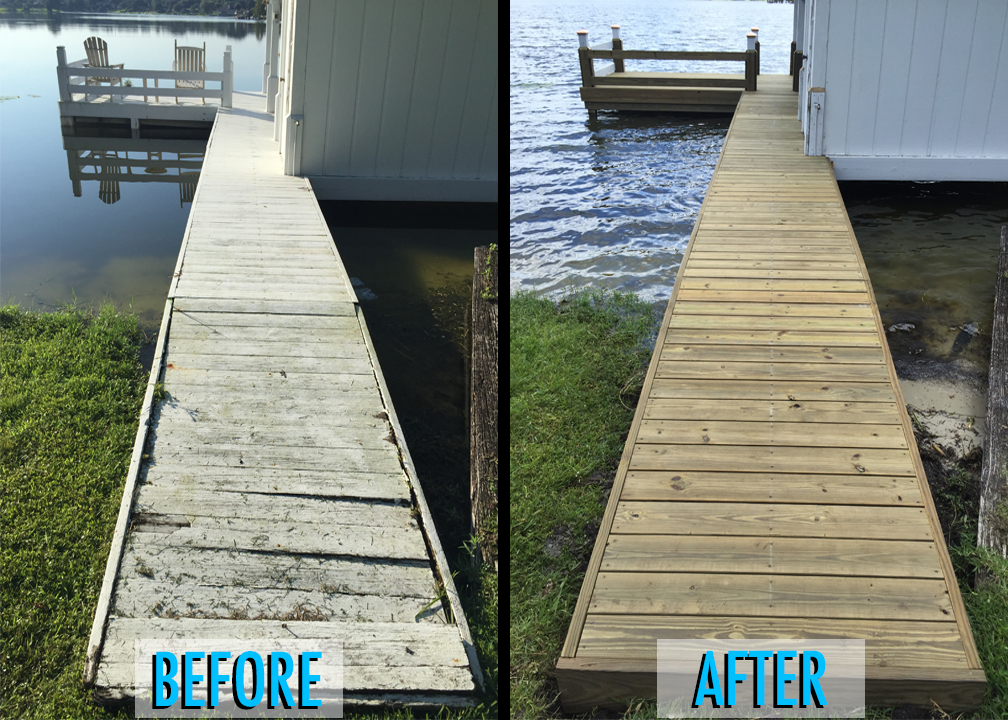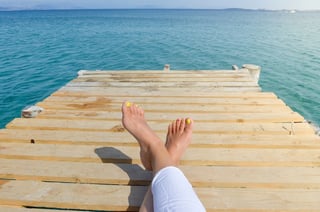Exactly How to Address Common Dock Repair Issues for Safe Water Tasks

Identifying Common Dock Issues
Identifying typical dock concerns is vital for preserving the capability and safety of your beachfront residential or commercial property. Normal examinations can aid reveal problems prior to they come to be extreme, ensuring both the longevity of the dock and the security of those who use it. One widespread issue is rusty or loose bolts. With time, screws, screws, and various other fasteners can become loosened due to consistent exposure to water and climate components, causing architectural instability.
One more common problem is the degradation of flotation protection gadgets. These tools are crucial for keeping the dock resilient, and any damage or slits can cause the dock to checklist or sink. On a regular basis inspecting for leakages or waterlogged floats can preempt more significant problems.
Additionally, algae and barnacle build-up on the dock's surface area can create harmful and unsafe problems. This biofouling not only poses a risk to users however can likewise accelerate the wear and tear of the dock products.
Lastly, inspecting for indicators of rust on steel parts is important. Corrosion can jeopardize the integrity of the dock's structure, making it dangerous. By consistently identifying these usual dock issues, you can ensure that your dock continues to be protected and practical for several years to come.
Repairing Rotting Timber
When addressing the problem of rotting timber on your dock, it is critical to act quickly to stop additional degeneration. Begin by extensively examining the whole structure to determine all affected locations. Utilize a screwdriver to probe the wood; if it sinks in conveniently, the wood is most likely decayed and requires immediate attention.
As soon as identified, eliminate the decomposed areas utilizing a saw or carve. Make certain to cut back to healthy and balanced, solid timber, guaranteeing you get rid of all compromised material. After removal, treat the continuing to be timber with a timber chemical to stop future rot. This treatment will help safeguard versus wetness, which is the key reason for wood degeneration.
Next, replace the removed sections with marine-grade lumber or pressure-treated wood, which are a lot more immune to water damage. Secure the brand-new pieces with stainless-steel or galvanized fasteners to stop deterioration. Furthermore, using a waterproof sealer to the new timber can give an additional layer of defense.
Safeguarding Loose Boards
Exactly how do you ensure your dock continues to be safe and useful for all its individuals? One essential element is protecting loosened boards, which can otherwise pose significant dangers. Loosened boards not only boost the risk of stumbling but can likewise endanger the architectural integrity of the entire dock.

For reinstallation, utilize stainless or galvanized steel screws, as these materials supply superior resistance to rust in aquatic settings. Make certain the screws are long sufficient to penetrate deep right into the underlying support structure, but not as long that they protrude via the dock's surface area. Pre-drilling pilot holes can help avoid the timber from splitting.
Finally, keep a regular examination routine to determine and address any new useful site issues promptly. By safeguarding loosened boards properly, you add to the general safety and security and long life of your dock, making it a dependable system for water activities.
Maintaining Unstable Pilings
Making sure the security of unsteady pilings is vital to keeping a practical and risk-free dock. Unsteady pilings can endanger the whole framework, presenting substantial risks to individuals and possibly bring about pricey repairs. The first step in stabilizing these important parts is a detailed inspection. Examine the pilings for indicators of rot, damages, or shifting. Utilize a level to examine for vertical alignment and guarantee they are driven deep enough right into the substratum to offer adequate assistance.
If the pilings are found to be unsteady, one efficient technique for support is using added supporting. Cross-bracing with treated lumber or galvanized metal can substantially boost security. Support the dental braces safely to both the pilings and the dock frame to disperse tons equally.

Routine maintenance and periodic review of the pilings' stability are important to guaranteeing lasting dock safety and security and performance.
Replacing Rusty Equipment
Attending to unsteady pilings is simply one element of preserving a dock's integrity; another crucial issue is replacing corroded hardware. Over time, direct exposure to dampness and salt can cause the oxidation and rust of braces, screws, and bolts, endangering the whole structure's security. Regular examination for corrosion is important, specifically after severe climate or seasonal adjustments.
When rusty hardware is determined, instant action is needed. Begin by picking marine-grade stainless steel or galvanized equipment, both made to resist the extreme marine environment. Make certain that you have the proper devices, such as wrenches and screwdrivers, to securely remove the old, rusty items without triggering further damage to the dock.
After removing the rusty equipment, extensively tidy the affected locations to get rid of any type of residual rust or debris. Apply a rust-inhibiting guide to subjected steel surface areas before setting up the new hardware. Tighten all fixtures securely to avoid future helping to loosen, and periodically examine the fittings to make certain recurring stability.
Changing corroded equipment not only extends the dock's pop over to this web-site life-span yet likewise significantly enhances the safety and security of water tasks. By proactively handling corrosion, you safeguard both the framework and its individuals, ensuring a safe and pleasurable waterside experience.
Final Thought
Regular evaluations and maintenance are necessary to address common dock repair service problems and make certain safe water activities. Such aggressive measures contribute to the general safety and security and functionality of dock frameworks, cultivating a secure setting for water-based tasks.
Guaranteeing the safety of water tasks hinges substantially on the proper upkeep and repair of anchors (Dock Repairs). These gadgets are important for maintaining the dock resilient, and any damages or slits can cause the dock to checklist or sink. By routinely determining these usual dock issues, you can make sure that your dock continues important source to be protected and useful for years to come
Ensuring the stability of unstable pilings is paramount to preserving a secure and functional dock.Regular assessments and maintenance are crucial to attend to usual dock repair work concerns and make sure safe water activities.